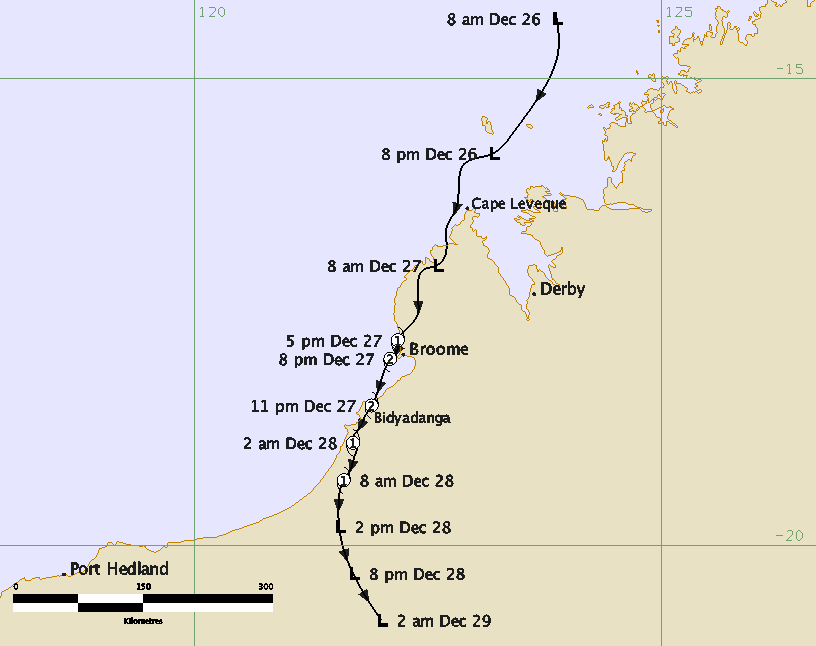Tropical Cyclone Hilda was the first tropical cyclone of the 2017/2018 to affect the Australian
mainland. It reached category 2 intensity and affected parts of the northwest Kimberley including Broome and
Bidyadanga.
|
A tropical low was first identified on Tuesday 26 December just off the northwest Kimberley coast, about
330 kilometres north of Derby. The system developed as it travelled south southwest parallel to the coast
moving over land southwest of Cape Leveque on Wednesday 27 December. It continued to move south southwest
just inland of the coast of the Dampier Peninsula before being named Tropical Cyclone Hilda at 5 pm AWST
Wednesday 27 December near Broome and soon after reached category 2 intensity over water.
|
Hilda made landfall at 11 pm AWST Wednesday just north of Bidyadanga and weakened into a tropical low by 2
pm AWST Thursday 28 December as it moved south southeast inland.
|
Some structural and vegetation damage was reported at both Bidyadanga and at Eco Beach resort (about 80km
northeast of Bidyadanga) as the system passed by. Minor vegetation damage and felled trees were reported at
Broome.
|
Broome Airport recorded a maximum wind gust of 100 kilometres per hour. Broome Port (a non-standard height
AWS) recorded a maximum gust of 139 kilometres per hour. Heavy rainfall occurred along mainly coastal
locations of the northwest Kimberley coast with 24 hour totals of 292mm at Cygnet Bay (to 9am on 27
December) and 201mm at Kilto Station (to 9am 28 December) being recorded. Localised flooding was reported in
Broome and road disturbances due to water occurred throughout the western Kimberley, eastern Pilbara and the
North and South Interior districts.
|
Hilda was the second tropical cyclone in the Australian region and the first to make landfall for the
2017/18 season.
|
**All information relating to intensity and track is preliminary information based on operational
estimates and subject to change following post analysis.**
|











